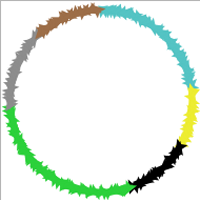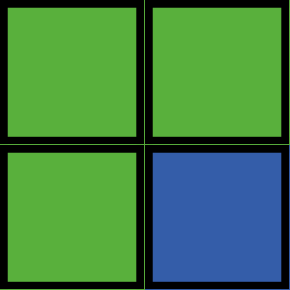


Until very recently, no general-purpose tools existed for students to render and explore systems of many interacting parts that can exhibit emergent behavior. Most of the tools used by experts to explore complexity in their domain of interest are highly domain specific designed for use by experts to study a particular class of phenomena. By enabling the rendering, simulation and visualization of the evolution of complex systems over time, the computer has proved an indispensable tool for making sense of complex systems and emergent phenomena. One reason for the slow transfer to schools is the heavy reliance of complex systems methodologies on the use of powerful computational technologies. The time has come for these ideas and methods to become a central part of every students learning.ĭespite its adoption by practicing scientists, the complex systems perspective is largely absent from the K-16 curriculum. An understanding of complex systems is becoming an essential part of every scientists knowledge and skills. This new perspective and the methods it brings to bear have been adopted across a wide array of natural and social sciences. In the minds of many, however, complex systems theory is not a new branch of science, but rather a new framework, a new perspective that allows us to see old scientific content in new ways. This broad new field seeks to understand how systems of interacting components evolve over time. The study of emergent phenomena is the principal occupation of a developing field of science, the study of complex dynamic systems (Gleick, 1987 Waldrop, 1992 Gell-Mann, 1994 Kelly, 1994 Holland, 1995 Kauffman, 1995). How do these patterns come about? All of these patterns are emergent, there is no leader bird which other birds follow, no conductor firefly leading the band - these patterns emerge out of the behavior of individuals and the adjustment of that behavior in interaction with other individuals. Visualize a flock of birds winging in the autumn sky or the amazing synchronized fireflies that blink in unison lighting up whole trees in the Far East. Such large-scale (macro-) patterns that arise out of the interactions of numerous interacting (micro-) "agents" are called "emergent phenomena" that is, phenomena that emerge from interactions at a lower level or scale.

Netlogo northwestern full#
Why is there so much pattern in the world? While grappling with this question in full would take us far afield, we can start with a simple observation: large scale patterns in the world are usually the result of the interactions of large numbers of smaller pieces that somehow combine in surprising ways to create the large-scale pattern. The characteristic shape can unfold in space or in time, sometimes striking and unmistakable and sometimes more hidden, needing probing observation or ingenious experiment to uncover it. Other patterns, such as the dynamics of the Dow Jones or of a fourth grade classroom, seem messier, inchoate, yet still exhibit a familiar and recognizable general "shape".

Many of these patterns have a kind of haunting beauty: the growth of a snowflake crystal, the perimeter pattern of a maple leaf, the advent of a summer squall. Keywords: complexity, emergence, modeling, parallel LogosĮverywhere we look, we see regularities, patterns, order. By exploring and constructing such models, students make connections between the micro-level of agents following rules and the macro-level patterns and regularities that constitute the world of natural and social phenomena. NetLogo is designed to enable learners to explore and construct models of emergent phenomena. is a multi-agent modeling language, a parallel extension of Logo. Modeling Emergent Phenomena with StarLogoT. Modeling Natures Emergent Patterns with Multi-agent LanguagesĬenter for Connected Learning and Computer-Based ModelingĪdapted from Wilensky, U.


 0 kommentar(er)
0 kommentar(er)
